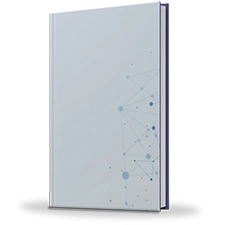Bio-insecticide Market Analysis
Bio-insecticides are natural formulations used for the management of bugs that feed on crops. They are one-of-a-kind from chemical insecticides in numerous ways. They cure the plant and soil from disease inflicting pathogens. Unlike chemical pesticides, bio-pesticides provide safety to the crop and soil. Bio-insecticides are preferred over the chemical pesticides. While synthetic pesticides are an excellent tool for agricultural production, they do have some disadvantages: they are costly, they are not always infallible, they may collect in our environment and harm our water systems, and they are not species specific. On the other hand, Bioinsecticides do not persist in the environment for a long time and have smaller shelf lives. They are effective at low quantities and are safer for humans and animals than synthetic insecticides, they are very precise, often impacting only a single species of insect and have a very specific mechanism of action, they are slow in action and the timing of their application is comparatively crucial.
COVID-19 Impact analysis
- COVID-19 resulted in the restrictions of workers, decline in demand from farmers, and closure of manufacturing facilities. The industry additionally suffered from extreme hard work shortages because of repeated lockdowns that affected the manufacturing and change movements. The decline in commercial enterprise due to the decrease in demand from some primary markets has placed strain on the profitability of biopesticides producers and vendors.
- Due to strict worldwide regulations on import and export of merchandise and restriction in the movement because of national lockdown, the demand and supply of biopesticide merchandise has been hampered. Furthermore, this effect of COVID-19 is anticipated to decrease because the import and export will no longer have restriction.
- After the outbreak of COVID-19, the customers are now aware of the consumption of chemical free meals and are looking to eat meals which is healthy and nutritious in nature. The international marketplace has seen a boom in awareness concerning diverse advantages of eating natural and chemical free product meals.
Top Impacting Factors
Heavy crop loss because of pest assaults pressurizes farmers to apply crop safety chemical compounds. Growing demand for biopesticides attributable to growing customer focus concerning food and environmental protection will create possibilities for crop protections chemical compounds' producers in years ahead. Short life of bioinsecticides, poor infrastructure & excessive initial funding required for storage and delivery of bioinsecticides restrains the growth of the bio-insecticide market.
Market Trends
Mitsui & Co. Ltd.'s affiliate, Mitsui AgriScience International SA/NV, has purchased a majority stake in Belchim Crop Protection NV/SA (BCP) (MASI). Mitsui's investment in BCP, together with its existing subsidiary Certis Europe B.V., expands Mitsui's development and distribution capabilities and offers a pathway for Japanese R&D innovation to reach the EU crop protection market.
Ventures introduced its collaboration with UPL Ltd. for Rynaxypyr Active Ingredient. This strategic move will permit FMC to boost Rynaxypyr lively to the farmers around the world and enhance the producing ability of this essential molecule.
A brand-new organic insecticide named Velifer developed by BASF SE Company for pest control in vegetable crops, registered to be used in Australia.
In order to achieve strategic mutual expansion, Futureco Bioscience S.A. has decided to sell a minority share to Sumi Agro Europe Ltd., SAE, a subsidiary of the Japanese firm Sumitomo Corporation specialized in crop protection and marketing.
Syngenta AG released its first bioinsecticides, Costar, in Portugal. The formula is primarily based totally on the stress of Bacillus spp., to be used in greater than 50 crops in European countries.
- This study presents the analytical depiction of the Bio-insecticide industry along with the current trends and future estimations to determine the imminent investment pockets.
- The report presents information related to key drivers, restraints, and opportunities along with detailed analysis of the Bio-insecticide market share.
- The current market is quantitatively analyzed to highlight the Bio-insecticide market growth scenario.
- Porter’s five forces analysis illustrates the potency of buyers & suppliers in the market.
- The report provides a detailed Bio-insecticide market analysis based on competitive intensity and how the competition will take shape in coming years
Questions answered in the Bio-insecticide Report
- Who are the leading market players active in the Bio-insecticide market?
- What current trends will influence the market in the next few years?
- What are the driving factors, restraints, and opportunities in the market?
- What future projections would help in taking further strategic steps?
- Upcoming Report specific FAQs Examples: Can be utilized randomly 4-5 FAQs per RD OR other from own suggestions, suitable for upcoming report.
- What is "Bio-insecticide"?
- What does “Bio-insecticide" allow organizations to achieve?
- Which technologies combine to make “Bio-insecticide" a critical organizational asset?
- What is "Bio-insecticide" Market prediction in the future?
- Upcoming Report specific FAQs Examples: Can be utilized randomly 4-5 FAQs per RD OR other from own suggestions, suitable for upcoming report.
Bio-insecticide Market Report Highlights
| Aspects | Details |
| By Technology |
|
| By Region |
|
| By Application |
|
| By Industry Vertical |
|
| Key Market Players | SDS Biotech K.K, BioSafe Systems, LLC, Certis USA LLc, Futureco Bioscience S.A., Camson Biotechnologies Ltd, Andermatt Biocontrol AG, Valent Biosciences LLC, Biobest Group NV, KilPest India Ltd, Marrone Bio Innovations, Som Phytopharma India Ltd, Bayer Pharmaceutics Compan |
Loading Table Of Content...



